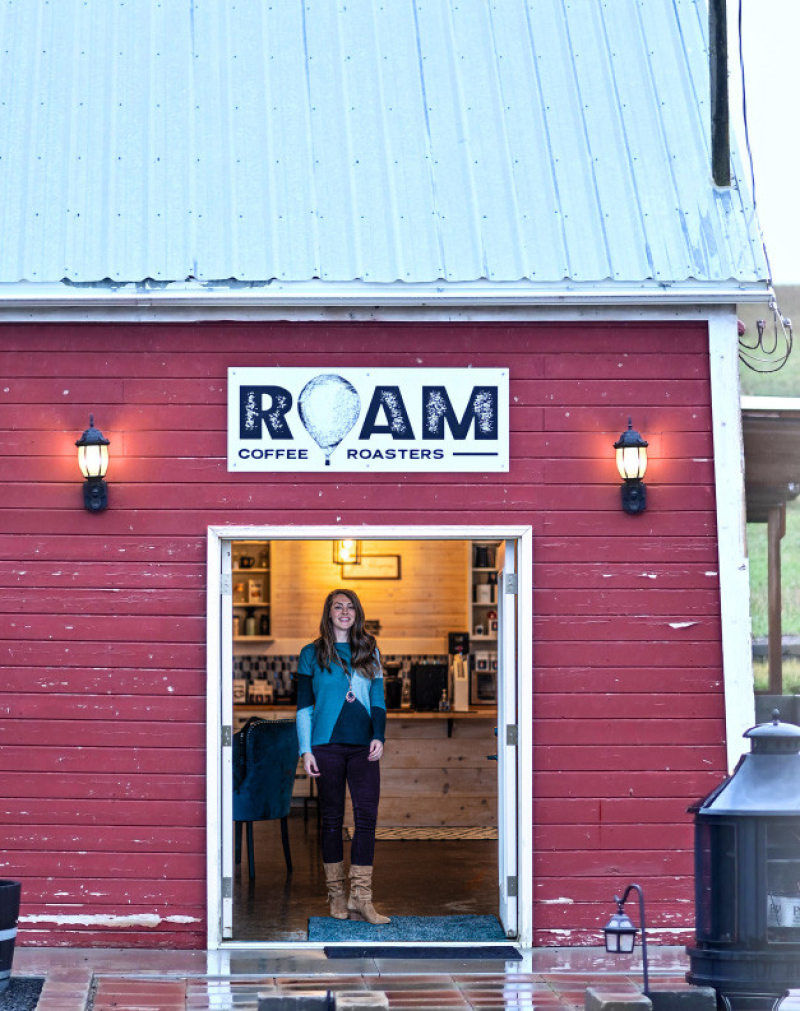Local Grains & Not-So-Local Beans
Growing wheat has taught Shelley Quigley everything she needs to know about life - and about roasting coffee.

In a nondescript barn surrounded by wheat fields in Eastern Washington, a fifth-generation wheat farmer is producing more than just grain: Shelley Quigley is roasting high-quality coffee to supply local coffee shops. And though coffee may be synonymous with the Pacific Northwest, in order to get here, the beans have to come from somewhere else.
“That's one of the No. 1 questions I get when I talk about the roastery being on our farm outside Harrington,” says Quigley, owner of Roam Coffee. “People ask, ‘How do you grow the coffee?’ And it's a perfectly reasonable question, but coffee only grows in the equatorial belt between the Tropic of Cancer and Capricorn. So inherently for coffee to get in my cup, it has had to travel, or ‘roam,’ around from all over the world to get here.”
Though the Quigley farmers don’t grow coffee, they know a few things about growing crops. Shelley is a fifth-generation wheat farmer who lives and works on a family farm that has grown wheat and barley for more than 135 years. In addition to her coffee-related work responsibilities, she and her husband also run the familiar farming gamut: planting, tending, and harvesting the crops, as well as keeping the animals alive.
“One of the reasons that I wanted to have the roastery here on the farm was to create that connection between farmers and farming and the finished product — in this case, coffee,” Quigley says, gesturing toward the coffee roaster working behind her. “I wanted to help people recognize that this magical elixir that shows up in our cups was probably grown by a family farmer, probably someone who's been doing it for generations that cares as much about the quality of that bean as I do about growing high-quality grain.”
Coffee beans are unique from place to place, and they are known for a “terroir” effect more familiar in grapes and wine. They’re affected by soil conditions, climate, elevation, and a myriad of other factors. Just like at family grain farms here in Washington, families in Brazil and Papua New Guinea put a lot of effort into producing a crop that reflects their home. When Quigley places an order for a shipment of beans from Colombia, it’s one farmer buying from another farmer. Ultimately, those farm-to-table connections help us better understand our food — and our coffee.
Quigley’s passion for educating people bubbles right under the surface of every conversation. She eagerly welcomes guests into the roastery for events throughout the year, excitedly explaining the finer details of the roasting process, discussing differences between the beans from Colombia vs. Zambia, and passionately advocating for farmers around the world.
“There are so few people that have a first-person connection with farmers these days,” she says. “But from my standpoint, the people that care the most about the ground are the people that are working it and have worked it for generations. I have two sons that will be sixth-generation farmers, if they decide to move into farming — and I don't want to ruin it for them.”
Quigley smiles as she thinks about her sixth-generation future farmers.
“I have done a lot of things wrong. If it can be broken, I've broken it. But it’s the same in farming and roasting and running a business — being able to bounce back from unexpected things. I hope my children learn how to do that. We’ve been doing that on this farm for many generations.”

